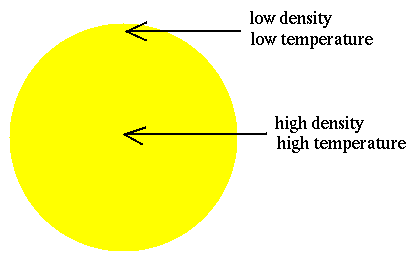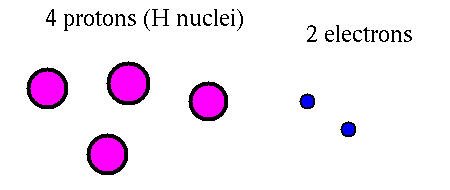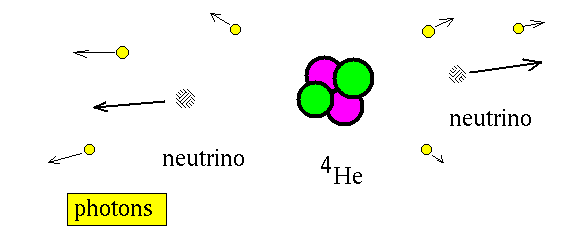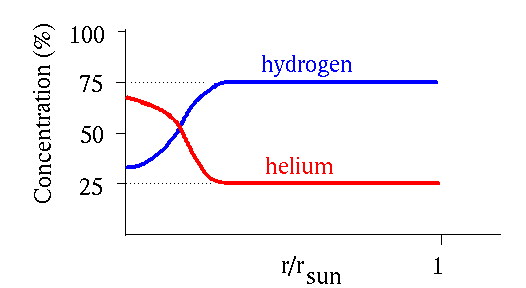
The life and death of stars.
The most obvious part of the Galaxy is stars. Stars contribute to
the dynamics of the Galaxy in a way that is interwoven with the gas and dust.
For this course, we don't look at stars in a great deal of detail, but concentrate on a few important points.
Death of Stars
Sooner or later, stars run out of hydrogen in their cores.
- For very heavy stars, it's sooner.
- For very light stars, it's later.
After using up the helium in its core, a star burns helium
in its core to make carbon.
What happens after this depends on the mass of the star.
Light Stars
In a low mass star in its last stage, with a helium burning shell
and a carbon core, stellar modelling suggests that the helium burning shell becomes unstable, and burns in bursts. This causes the star to eject much of its outer layers.
The result is a ``planetary nebula'' which may last for 50,000 years before
it dissapates into space.
Left behind in the middle is a white dwarf star, small and hot, but with
no more nuclear reactions. It starts to cool (but it cools very slowly).
Here is some evidence. (Colors in general aren't exactly real in these
pictures.)
- The Egg Nebula, where this process seems to be going on now; note the shells of ejected gas. It appears that light gets out near the poles of the star and is reflected from dust.
- M57. The ring nebula.
- Here are six of them.
- NGC6543, the Cat's Eye Nebula,
a quite complex planetary nebula, possibly associated with a dying member of
a binary system.
Death of big stars and supernovae
In the case of heavier stars,
the star makes heavier elements, up to iron, as we have seen.
Consider a massive star like Betelgeuse. This is the one star that has
a large enough size and is near enough (~100 pc) to us that we can
see it as a disk with the Hubble Space telescope:
Stars that start out very massive as O and B stars don't live very long. In their later
stages, they lose a lot of mass through strong ``stellar winds.'' Then,
they explode. the explosion is called a Type II supernova.
An exploding massive star (say M ~ 20 Msun) produces a very
large energy release. Some of this comes in the form of visible light,
which lasts for several days and then fades away over a period of
weeks. If it is in our galaxy and not obscured by dust, a supernova can
be recognized as a ``new star.''
A supernova leaves behind gas expanding through space, a ``supernova
remnant.''
The most famous example is a supernova in the constellation Taurus that
exploded on 4 July 1054. (Actually 1054 minus the 6500 year light
travel time to Earth.) Observations of this supernova were recorded by
Chinese and Japanese astronomers and also (possibly) in an Anasazi rock
painting in New Mexico. Europeans seem not to have paid much
attention. The left over remnant is called the
Crab Nebula (M1).
The filaments are expanding. Doppler shift measurements of the
rate of expansion are consistent with an explosion date around 1100 AD.
There was a supernova in the Large Magellanic Cloud in 1987. Astronomers
learned a lot from that. The explosion has illuminated
gas lost from
the earlier red supergiant star.
Here is a small part of another supernova remnant,
the Cygnus Loop.
Here is another, N123D
in the Large Magellenic Cloud.
The shock waves from supernovae explosions are thought to play a role
in triggering star formation by compressing interstellar gas.
The gas/star cycle and the production of heavy elements

- Low mass stars last a long time (> 10 x 109 yr) so they
do not really contribute to this cycle.
- Some heavy elements are made in medium mass stars and spread through
the Galaxy by planetary nebulae. The medium mass stars last a few billion
years, so they can contribute some.
- Heavy elements, especially the heaviest elements, are made in the big massive stars and spread through the galaxy by strong stellar winds and then by supernovae.
This happens on a rather short time scale, just a few million years for
the heaviest stars.
- Some of the heavy element production is in nuclear fusion before the
supernova explosion.
- Additional heavy element production (including elements beyond iron)
occur during the explosion, as the shock wave heats the stellar material.
The result should be that the galaxy has been building up its supply
of heavy elements. Note that
- the Earth is made of heavy elements, iron, silicon, oxygen,...;
- you are made mostly of carbon, oxygen and hydrogen;
- so presumably the Earth and we are made of stuff that was manufactured
in the middle of a star.
Davison E. Soper, Institute of Theoretical Science,
University of Oregon, Eugene OR 97403 USA
soper@bovine.uoregon.edu





